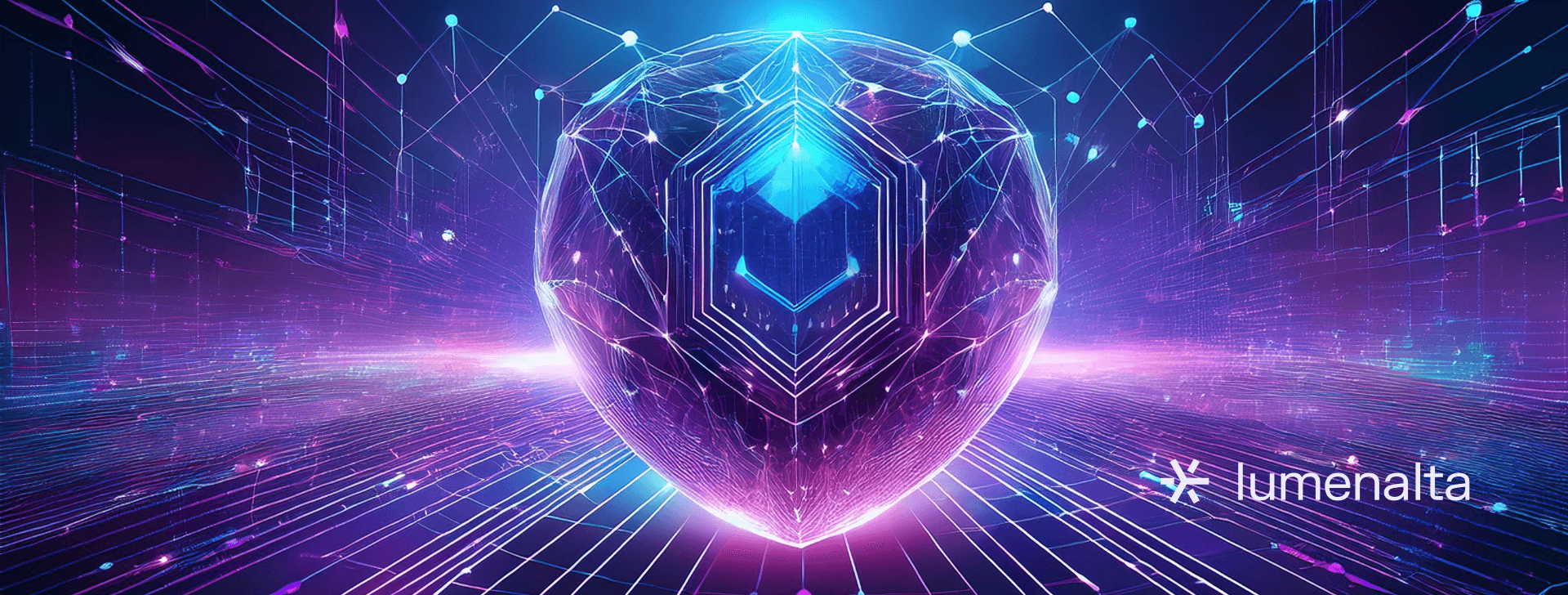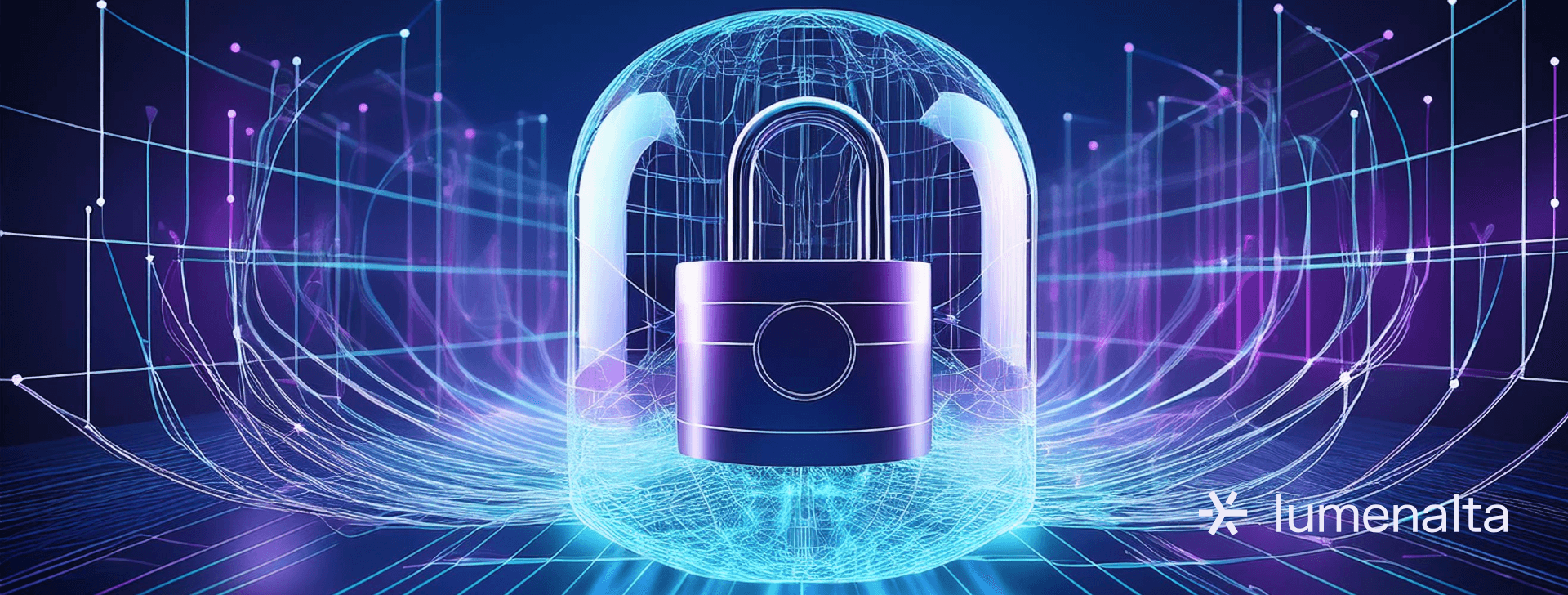
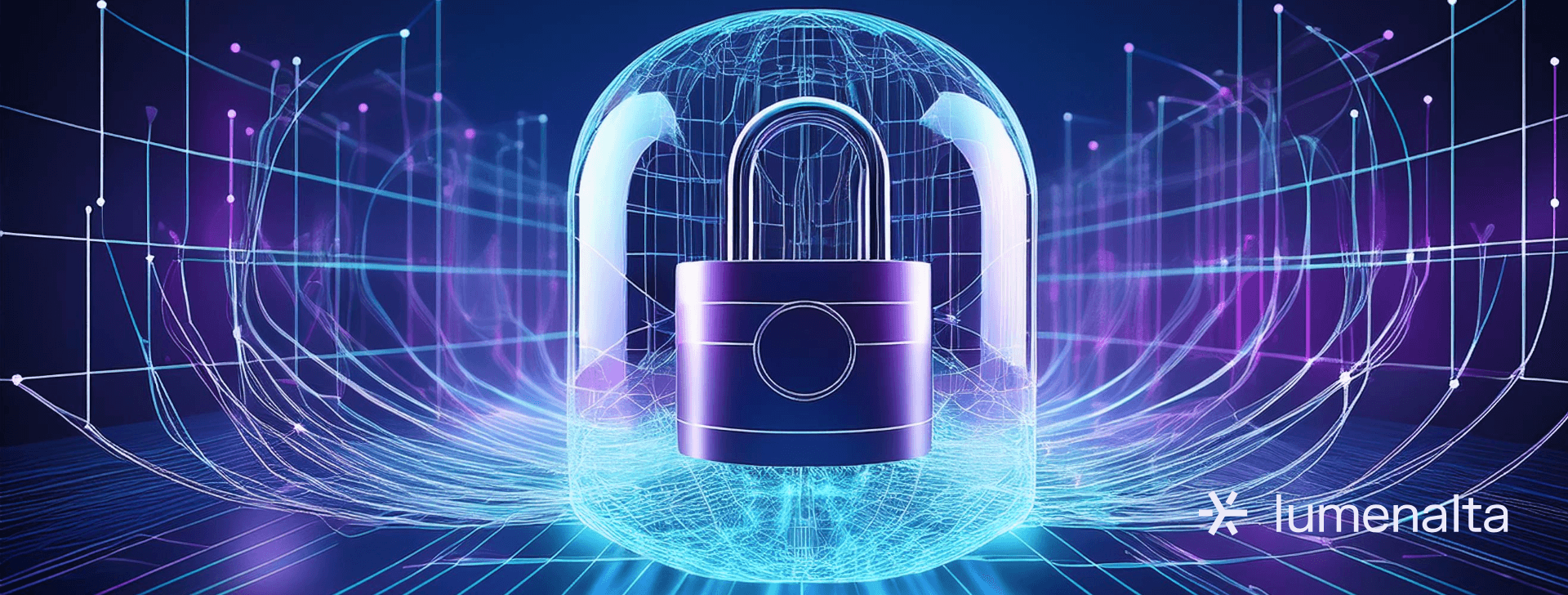
What is cybersecurity and why is it important?
NOV. 23, 2024
6 Min Read
Cybersecurity is the backbone of protecting the digital world, ensuring the confidentiality, integrity, and availability of sensitive data and systems.
As organizations rely more heavily on digital operations, cybersecurity acts as the first line of defense against an ecosystem of cyber threats. From personal devices to enterprise networks, robust cybersecurity safeguards intellectual property, operational continuity, and regulatory compliance, making it a critical pillar of modern business.
The threats to digital systems are diverse and constantly updating. Cybercriminals exploit vulnerabilities through phishing, ransomware, and advanced persistent threats, causing widespread damage to operations and reputation. AI-powered tools have transformed the fight against these threats, enabling real-time detection, automated responses, and predictive analytics. For industries like healthcare and construction, where technologies like generative AI are gaining prominence, strong cybersecurity frameworks ensure these innovations remain safe, reliable, and impactful.
Cybersecurity also plays a pivotal role in fostering trust and enabling long-term success. By implementing practices such as endpoint security, network encryption, and zero trust principles, organizations not only protect their systems but also build resilience against future challenges. As cyber threats grow in sophistication, embracing proactive and adaptive cybersecurity strategies has become essential.
Key takeaways
- 1. Cybersecurity protects the confidentiality, integrity, and availability of digital assets while minimizing operational risks and ensuring compliance.
- 2. Evolving threats, such as ransomware and zero-day vulnerabilities, require organizations to adopt proactive and adaptive defense measures.
- 3. AI and machine learning improve threat detection and automate responses, making them integral to modern cybersecurity strategies.
- 4. Best practices, including regular training, endpoint security, and incident response planning, are essential for reducing vulnerabilities.
- 5. As generative AI tools gain prominence in industries like construction, robust cybersecurity ensures their safe and reliable deployment.
Understanding why cybersecurity is important
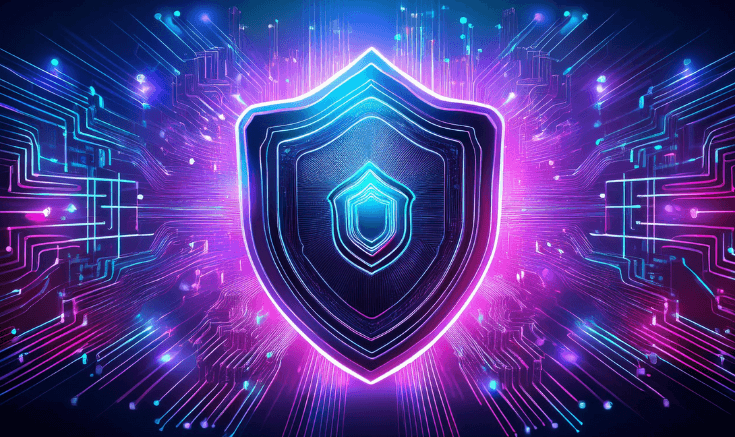
Cybersecurity refers to the practices, technologies, and processes implemented to safeguard computers, networks, programs, and data from digital attacks, unauthorized access, or damage. It encompasses everything from protecting personal devices to securing large enterprise infrastructures. The core goal is to ensure the confidentiality, integrity, and availability of sensitive information, often summarized as the CIA triad in cybersecurity principles.
Defining cybersecurity
At its core, cybersecurity is about creating barriers and strategies to prevent malicious actors from exploiting vulnerabilities in digital systems. It involves multiple layers of protection, including hardware, software, and procedural safeguards. Key elements include:
- Network security: Protects the integrity of networks and data during transmission.
- Information security: Safeguards data from unauthorized access or alteration.
- Endpoint security: Ensures individual devices, like laptops and mobile phones, are secure.
- Application security: Focuses on securing software and apps from threats during development and deployment.
Cybersecurity also extends to incident response and disaster recovery, ensuring that systems can quickly recover from disruptions caused by attacks or system failures. In industries like construction, where generative AI plays a growing role, cybersecurity measures must evolve to protect the vast amounts of data and complex systems integral to these innovations.
Why cybersecurity is important
The importance of cybersecurity lies in its role as the first line of defense against digital threats. Without robust cybersecurity practices, organizations are at risk of attacks that can lead to severe consequences:
- Data protection: Sensitive data, such as intellectual property, customer information, or operational plans, is a prime target for cybercriminals. In construction, proprietary designs or generative AI models can be exploited if unprotected.
- Operational continuity: Cyberattacks, such as ransomware, can halt operations, leading to costly delays and loss of productivity. For example, construction timelines are critical, and disruptions can cascade into significant financial impacts.
- Regulatory compliance: Many industries are subject to strict regulations regarding data privacy and security. A cybersecurity breach can lead to legal penalties and damage to stakeholder trust.
- Preserving trust: Businesses rely on their reputation to maintain client and partner relationships. A security breach not only erodes confidence but also impacts long-term success.
As generative AI in construction becomes more prevalent, its reliance on secure systems and accurate data highlights cybersecurity’s critical role. The integration of advanced technologies, like machine learning and cloud-based collaboration tools, necessitates a fortified cybersecurity strategy to ensure they deliver their intended value without introducing new vulnerabilities.
Cybersecurity is not just a technical requirement—it is a fundamental component of business resilience, especially in sectors adopting cutting-edge technologies. Safeguarding systems against emerging threats enables organizations to succeed.
“Cybersecurity ensures data integrity, confidentiality, and availability, forming a cornerstone for organizational resilience and trust.”
Common types of cybersecurity threats

Digital ecosystems are full of threats that evolve as the technologies they target. Understanding these threats is the first step in implementing effective cybersecurity measures. Below are some of the most common types of cybersecurity threats:
- Phishing attacks: Fraudulent emails or messages designed to trick individuals into revealing sensitive information, such as login credentials or financial data. These attacks often impersonate trusted entities, making them a persistent and effective threat.
- Malware: Malicious software that infiltrates systems to steal, damage, or manipulate data. Examples include viruses, worms, ransomware, and spyware. Malware is frequently used in targeted attacks, exploiting vulnerabilities in unpatched systems.
- Ransomware: A form of malware that encrypts data, rendering it inaccessible until a ransom is paid. Ransomware attacks have skyrocketed in recent years, targeting businesses and critical infrastructure globally.
- Distributed denial-of-service (DDoS) attacks: These attacks overwhelm a system, network, or server with traffic, causing it to crash or become unusable. DDoS attacks are often used to disrupt services or distract organizations while other attacks are launched.
- Insider threats: Security risks originating from within an organization, whether intentional or accidental. Employees, contractors, or business partners with access to sensitive data can inadvertently or maliciously expose it.
- Zero-day vulnerabilities: Flaws in software or hardware that are unknown to the vendor and remain unpatched. Cybercriminals exploit these vulnerabilities to infiltrate systems before fixes are deployed.
- Advanced persistent threats (APTs): Long-term targeted attacks by skilled adversaries, often supported by nation-states or organized crime groups. APTs are designed to gain and maintain access to networks to steal data or cause disruption over time.
- Man-in-the-middle (MitM) attacks: Interception of communication between two parties, allowing attackers to steal or alter information being exchanged. These attacks often target unsecured networks, such as public Wi-Fi.
Cybersecurity threats are not limited to these examples but continually adapt to exploit new vulnerabilities. A comprehensive cybersecurity strategy must address these varied threats to safeguard systems effectively. This proactive approach is especially critical as technologies like generative AI become integral to industries like construction, where data and operational continuity are paramount.
Role of AI and machine learning in cybersecurity
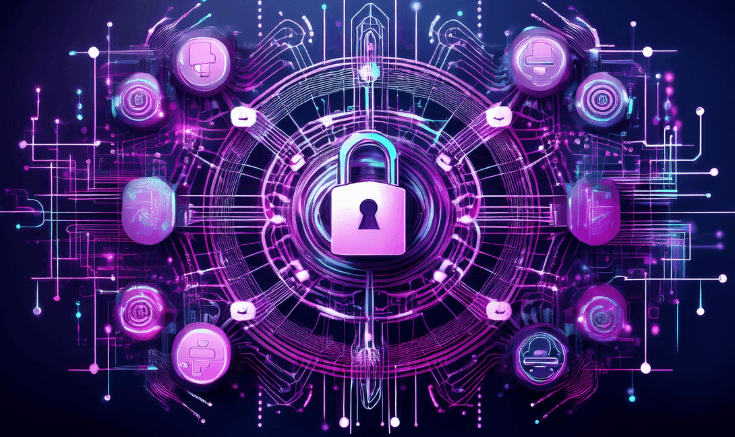
Artificial intelligence and machine learning are transforming cybersecurity, enabling organizations to stay ahead of sophisticated cyber threats. These advanced technologies enhance the speed, accuracy, and adaptability of security measures, providing a proactive approach to defending critical systems.
Enhancing threat detection and prevention
AI and machine learning analyze vast amounts of data in real time, identifying patterns and anomalies that may signal potential threats. Unlike traditional security measures, which rely on static rules, AI adapts to evolving attack strategies. For instance, machine learning models can detect unusual login behaviors or unauthorized access attempts, helping to mitigate breaches before they occur.
Automating response and mitigation
AI-driven systems can automate responses to certain types of attacks, reducing reaction time and minimizing damage. For example, an AI-based system might immediately isolate an infected device from a network to prevent malware from spreading. This capability is especially valuable for organizations with complex infrastructures, such as those leveraging generative AI in construction projects.
Supporting predictive security strategies
Machine learning enables predictive analytics by assessing historical data and identifying potential vulnerabilities or future attack vectors. This foresight helps organizations prioritize security updates and allocate resources more effectively.
Addressing the challenges of implementation
While AI and machine learning offer significant advantages, they are not without challenges. Cybercriminals also use AI to develop advanced attacks, creating an ongoing arms race. Additionally, implementing AI solutions requires substantial investment, expertise, and a commitment to regular updates to maintain effectiveness.
The integration of AI and machine learning into cybersecurity strategies represents a paradigm shift in defending against modern threats.
8 essential cybersecurity best practices
Implementing robust cybersecurity practices is vital to protecting sensitive data and maintaining operational resilience. The following best practices provide a foundational framework for organizations to secure their systems effectively:
- Educate employees on cybersecurity: Regular training helps employees recognize threats like phishing and social engineering. Empowering staff with knowledge reduces the risk of accidental breaches caused by human error.
- Use strong, unique passwords: Encourage the use of complex passwords and implement password management tools to ensure secure access across systems. Multi-factor authentication adds an extra layer of protection.
- Keep software updated: Regularly updating applications, operating systems, and security tools closes vulnerabilities that attackers may exploit. Automatic updates can streamline this process.
- Implement endpoint security solutions: Protect all devices connected to the network, including laptops, smartphones, and IoT devices. Endpoint security solutions safeguard these access points from unauthorized activity.
- Restrict access based on roles: Adopt the principle of least privilege, granting users access only to the data and systems necessary for their roles. This minimizes potential exposure if an account is compromised.
- Conduct regular security audits: Frequent audits help identify vulnerabilities and ensure compliance with cybersecurity standards. Penetration testing can also simulate attacks to evaluate system defenses.
- Secure networks and communications: Use firewalls, encryption, and secure protocols to protect data during transmission. For example, a virtual private network (VPN) ensures secure communication, especially for remote teams.
- Develop an incident response plan: A comprehensive plan outlines how to detect, respond to, and recover from cybersecurity incidents. Regularly updating and testing this plan ensures preparedness.
These best practices serve as a proactive defense against cyberattacks and reduce the likelihood of costly breaches. As industries adopt advanced technologies such as generative AI, adhering to these practices becomes critical to maintaining the integrity and functionality of digital systems. A strong cybersecurity posture fosters trust and resilience, enabling businesses to succeed.
“Artificial intelligence and machine learning are transforming cybersecurity, enabling organizations to stay ahead of increasingly sophisticated cyber threats.”
Key components of a cybersecurity framework
A cybersecurity framework provides a structured approach to identifying, managing, and mitigating security risks. By integrating policies, technologies, and processes, organizations can ensure a cohesive and resilient defense against cyber threats. Below are the essential components of a comprehensive cybersecurity framework:
Risk assessment and management
Understanding an organization’s unique risks is the cornerstone of an effective framework. This involves identifying critical assets, evaluating potential vulnerabilities, and assessing the likelihood and impact of threats. Ongoing risk management ensures that strategies remain aligned with changing risks.
Policies and procedures
Clear, enforceable policies establish guidelines for acceptable use, access control, incident response, and data protection. These policies serve as a foundation for consistent cybersecurity practices and regulatory compliance.
Security architecture and controls
A robust architecture incorporates multiple layers of defense, such as firewalls, intrusion detection systems, and encryption technologies. This layered approach ensures that even if one security measure fails, others remain active to protect systems and data.
Continuous monitoring and analytics
Real-time monitoring detects and addresses security incidents promptly. Tools that leverage advanced analytics, such as AI, can identify anomalies, providing an additional layer of defense against sophisticated threats.
Incident response and recovery
A well-defined incident response plan ensures swift action when breaches occur. This includes isolating affected systems, mitigating damage, and restoring operations. Effective recovery processes minimize downtime and preserve business continuity.
Compliance and regulatory alignment
Adherence to industry standards and legal requirements is critical. Frameworks like ISO 27001, NIST Cybersecurity Framework, and GDPR provide benchmarks for building a compliant and effective cybersecurity program.
Training and awareness
Human error remains one of the leading causes of cybersecurity breaches. Regular training programs educate employees on recognizing threats and following best practices, creating a culture of security awareness.
A robust cybersecurity framework not only protects against known threats but also equips organizations to anticipate and counter emerging risks. This is particularly important for industries like construction, where generative AI tools depend on secure systems to deliver innovation without disruption. By integrating these components, organizations can ensure a proactive and adaptive approach to cybersecurity.
Emerging trends in cybersecurity
The cybersecurity field is constantly updating to address the growing complexity of threats. One of the most prominent trends is the integration of artificial intelligence into cybersecurity strategies. AI enhances the ability to detect and mitigate threats by analyzing vast amounts of data and identifying patterns of abnormal behavior in real time. However, cybercriminals are also adopting AI to develop more advanced attack methods, creating an ongoing arms race between attackers and defenders.
Another critical development is the widespread adoption of zero trust architecture. This model assumes that no user or device can be trusted by default, requiring continuous verification at every stage of access. As businesses shift to remote and hybrid work environments, zero trust principles are becoming essential to secure dispersed networks and endpoints.
Additionally, the rise of cloud computing and IoT has brought new challenges and opportunities. Organizations are prioritizing cloud security measures like encryption and access management while also focusing on securing the vast network of IoT devices that are now integral to many industries, including construction. These trends, coupled with stricter regulatory requirements, are reshaping cybersecurity practices.
Cybersecurity is no longer optional—it is a fundamental component of modern business success. Protecting your digital assets, ensuring operational resilience, and maintaining trust with stakeholders are critical. At Lumenalta, we design tailored cybersecurity solutions that align with your organization’s unique needs, equipping you to face challenges with confidence. Let’s create a brighter path to secure innovation.
Table of contents
- Understanding why cybersecurity is important
- Common types of cybersecurity threats
- Role of AI and machine learning in cybersecurity
- 8 essential cybersecurity best practices
- Key components of a cybersecurity framework
- Emerging trends in cybersecurity
- Common questions about cybersecurity and why is it important
Common questions about cybersecurity and why is it important
What are the key benefits of adopting a cybersecurity framework?
How does AI improve cybersecurity measures?
What are zero trust principles in cybersecurity?
How do cybersecurity best practices support operational continuity?
Why is cybersecurity critical for industries adopting generative AI?
Want to learn how cybersecurity can bring more transparency and trust to your operations?

